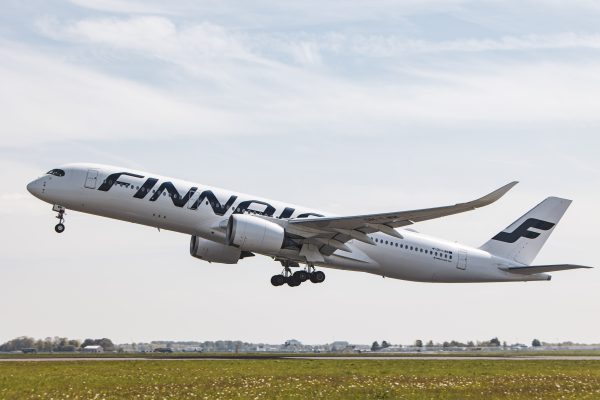Russia’s war against Ukraine underlines the importance – and vulnerability – of modern, high-speed telecommunications. High-speed data connectivity has proved crucial on the battlefield. It powers surveillance and reconnaissance. It operates drones, optimizes logistics, and supports command and control.
Despite Russian attacks on its telecom networks, Ukraine has managed to stay connected. It was fortunate to rely on Western rather than Chinese vendors. Ericsson, Cisco, Oracle, and Microsoft provided essential support to keep Ukraine’s internet running during its existential struggle.
Securing civilian telecom networks for military usage remains a challenge for transatlantic cohesion.
During the past decade, the US has been urging its allies to move away from Chinese providers such as Huawei and ZTE in their roll-out of the fifth-generation (5G) telecom. President Donald Trump made the issue a priority and President Joseph Biden is following the same policy. Both argue that NATO must be sure that information can be exchanged in a secure way.
Washington’s campaign has been only partially successful. The EU in 2020 agreed on a risk-mitigating 5G toolbox to reduce their reliance on ‘high-risk’ (i.e. Chinese) vendors. European governments agree in most cases to must remove Chinese technology from networks running critical infrastructure. They also agree that it should be removed from the network ‘core’, which performs crucial functions such as server authentication and access.
Yet in 2023, Germany and Italy continue to rely on Chinese 5G, with Huawei building 59% and 51% of their respective networks, according to a recent study. In contrast, Baltic countries, which are most exposed to potential Russian aggression, have eliminated Chinese technology in their 5G rollouts.
Many European governments still do not agree on the strict need to remove it also from the ‘periphery’ networks, or the Radio Access Network (RAN) that interacts directly with users. Experts highlight the difficulty in separating ‘core’ from ‘periphery’ because telecom operators are bringing core operations closer to users in order to reduce delays between data requests and data deliveries. It is also difficult to separate core from periphery because common software is increasingly deployed in all parts of the network.
The transatlantic divide also reflects different starting points. Washington never allowed Chinese vendors into its telecom market (seeing China is a rising peer competitor) and suffered little extra expense from banning them. In contrast, European countries (more agnostic about reliance on China) now have to remove installed equipment and incur the extra, significant cost.
A new telecom technology called Open RAN offers one way forward. It allows various vendors to build a common system rather than relying on a single vendor’s integrated system. Americans embrace it, while Europeans remain skeptical.
Europeans’ first concern is security, a fear that Open RAN interfaces will increase the number of entry points for malicious actors. A single system built by a single vendor is safer than one composed of parts from multiple vendors, they argue. In fact, the opposite may be true. As an open system, it is easy to switch out any troublesome or risky equipment with other equipment from safe sources.
Europeans also fear that the technology may not be ready for widespread deployment. No national existing brownfield networkhas yet replaced Chinese equipment with Open RAN. So far, only one Japanese company, Rakuten, has built a large-scale Open RAN network – a greenfield operation that covers all of Japan. Rakuten’s core network contains no Chinese parts. Most hardware is Japanese, while the software and semiconductors are American.
This nourishes fear among Europeans that Open RAN would loosen their competitive advantage on telecom technology. The continent is home to the world’s two biggest non-Chinese vendors, Nokia and Ericsson, which run the risks of losing out to a new generation of decentralized, software-driven vendors.
Regardless of the adoption or not of Open RAN among European countries, the EU will need to keep up the pressure to reduce Chinese-supplied equipment. The European Commission urged countries to implement a toolbox restricting non-trusted vendors. Some EU member states, notably Hungary, Bulgaria, Czechia, and Portugal still have no legislation in place to comply.
But change may be coming. A number of European nations are reassessing their dependence on China for critical telecommunications infrastructure. Portugal, reliant on Huawei equipment, now envisions a ban. Earlier this month, officials in Brussels said that the EU is considering a bloc-wide mandatory ban on Huawei. Thierry Breton, the EU’s internal market commissioner, urged the bloc’s telecoms ministers that the continent’s continued reliance on Chinese telecom equipment ‘exposes the union’s collective security.’
The message is clear. Europe experienced the consequences of becoming dependent on Russian gas. It must avoid making the same mistake in telecommunications by giving China a stranglehold.
Dr. Henrik Larsen is a Senior Researcher in the Swiss and Euro- Atlantic Security Team at the Center for Security Studies at the ETH Zürich with a focus on NATO and transatlantic security. Before, he served as a Political Adviser with the EU Delegation to Ukraine and was a Research Fellow at Harvard University’s Belfer Center, the Carnegie Endowment for International Peace and at Stanford University’s Center on Democracy, Development, and the Rule of Law.
Bandwidth is CEPA’s online journal dedicated to advancing transatlantic cooperation on tech policy. All opinions are those of the author and do not necessarily represent the position or views of the institutions they represent or the Center for European Policy Analysis.





